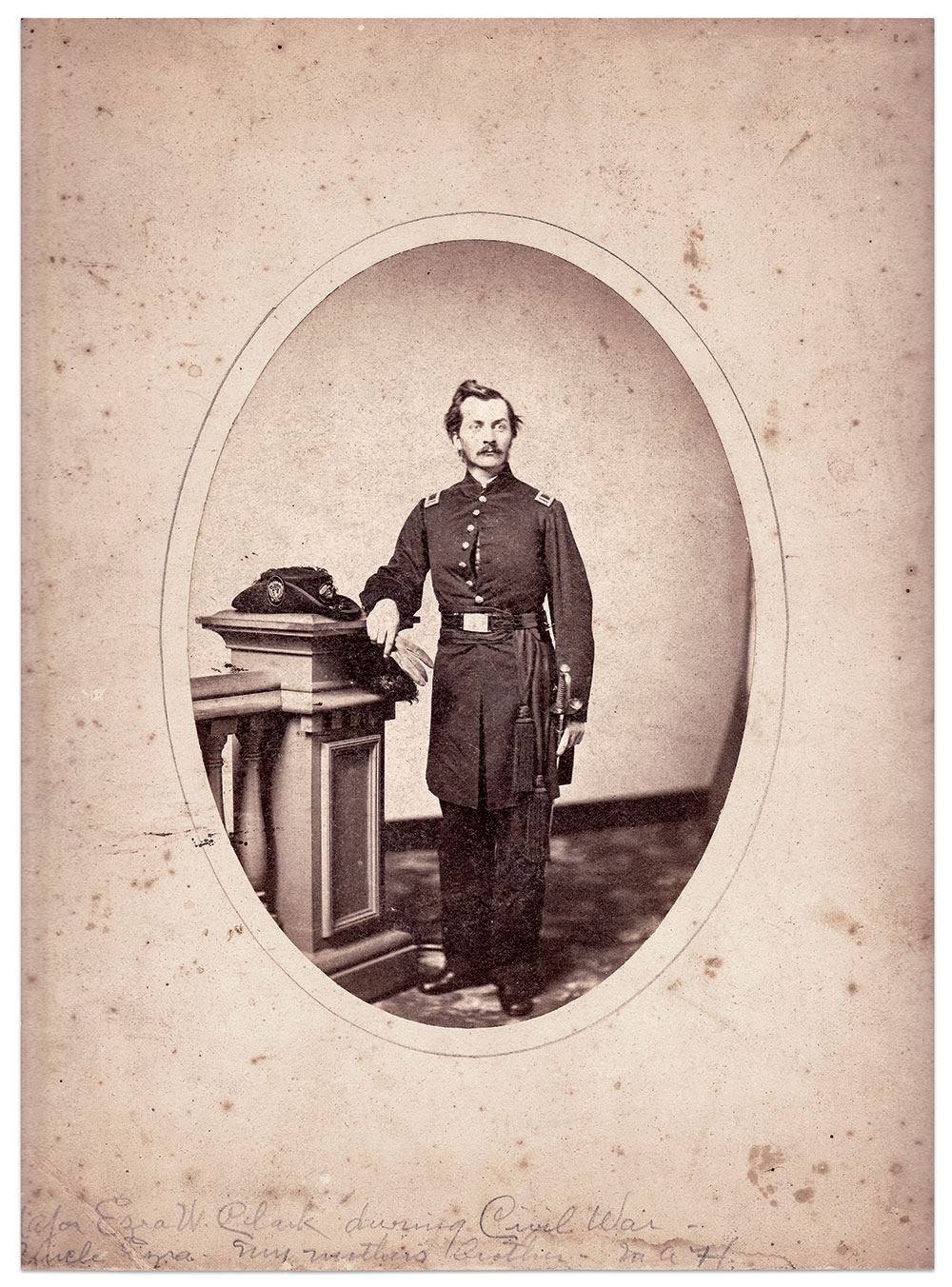Following the end of the Civil War, U.S. army commanders awarded a multitude of brevets to deserving officers. These honorary ranks were a tool for senior officers to recognize subordinates for gallant and meritorious service and a source of pride to the recipient.
On Aug. 6, 1865, Maj. Gen. Winfield Scott Hancock recommended an officer worthy of the honor. Ezra Westcote Clark, Jr., a native of Granville, Ohio, had enlisted in the army in April 1861 for a three-month term as first sergeant in Company A of the Buckeye State’s 8th Infantry. In the autumn of 1861, he rejoined the army as a first lieutenant and adjutant in the 34th Ohio Infantry. He proved a capable soldier during operations in western Virginia and the Shenandoah Valley.

Clark left the 34th in early 1864 to accept a promotion to captain and assistant adjutant general in the 1st Cavalry Brigade of the 8th Corps, commanded by Brig. Gen. Alfred N.A. Duffié. Clark ended his service on Hancock’s staff. In his letter of recommendation to award a major’s brevet to Clark, Hancock stated, “Captain Clark has performed his duty, gallantly and faithfully, and received the commendation of his commanding officers, and has been overlooked in recommendations for brevets.”

Following the war, Clark settled in Washington, D.C., and became an attorney. In 1871, he joined the U.S. Treasury Department, rising through the ranks to become chief of the Revenue Cutter Service. In the 1890s, Treasury officials appointed him as an assistant agent to the Pribilof Islands of St. George and St. Paul in the Bering Sea—about 300 miles off mainland Alaska.
Clark remained in the District of Alaska until 1910, leaving behind a legacy of establishing a population of reindeer on the islands, following a similar move in Northern Alaska to provide food for inhabitants. Two years later, Alaska became a territory.

Clark returned to the nation’s capital, where he died in 1915 at age 76. His wife, Sylvia, and three sons survived him. The Clark River on the Alaskan Peninsula is named in his honor.
One of the Clark’s sons, Ezra III (1880-1949), served as a pilot in World War I, and later as a forklift truck designer and industrialist who consulted on materials for the Normandy Invasion during World War II. He is buried with his parents in Arlington National Cemetery.
Most Hallowed Ground is part of the Arlington National Cemetery (ANC) Book Project. Established by Jim Quinlan, owner of The Excelsior Brigade, its mission is to identify approximately 15,000 Civil War veterans interred on the hallowed grounds of the cemetery, and to provide a biographical sketch and photograph of each individual. If you have an image to share, or would like more information about the ANC project, please contact Jim at 703-307-0344.
SPREAD THE WORD: We encourage you to share this story on social media and elsewhere to educate and raise awareness. If you wish to use any image on this page for another purpose, please request permission.
LEARN MORE about Military Images, America’s only magazine dedicated to showcasing, interpreting and preserving Civil War portrait photography.
VISIT OUR STORE to subscribe, renew a subscription, and more.

